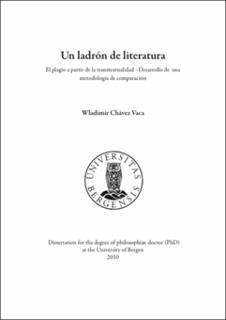Un ladrón de literatura. El plagio a partir de la transtextualidad –Desarrollo de una metodología de comparación
Abstract
What place does plagiarism have in the academic world? Within the realm of academic enquiry, the sin is seemingly unforgivable, but what then of the artistic world? Is there perhaps a tendency to permit plagiarism? Some authors claim that their work is merely the continuation of, or clearly the result of, others’ works, or they subscribe to a style of writing which was enforced by the particular era or prevailing circumstances. This study evaluates the concept of “plagiarism” from the viewpoint of Gerard Genette’s transtextuality and develops a methodology for textual comparison. Using the typology outlined in his book Palimpsestos (1982), Genette focuses on the interrelationship of different texts. Although his primary focus is hypertextuality, Genette also mentions plagiarism, which he considers to be a type of intertextuality. While the present study is based on the proposals of Genette, it also redefines his concept of plagiarism as his approach in Palimpsestos revealed itself to be insufficient. Given that the phenomenon of plagiarism has canonical roots, this study compares the development of the concept from the perspective of tradition and ultimately includes plagiarism as a part of the processes involved in both text creation and text reception. Thus, plagiarism becomes limited and it is proposed that a possibility of differentiating between the various means of literary adaptation and appropriation exists through the use of a methodology of transtextual comparison. This methodology, which is both pragmatic and eclectic, consists of eight steps and tests the validity of six cases of supposed plagiarism. These cases include short stories, poems, a novel, one play and an “exemplum” written by the authors Jorge Luis Borges, Giovanni Papini, Emilio Berisso, Noboa Caamaño, Agustín Cuzzani, Federico Andahazi, Alonso Cueto, Rabindranath Tagore, Pablo Neruda, Don Juan Manuel and Hans Christian Andersen.
Description
Revised version
